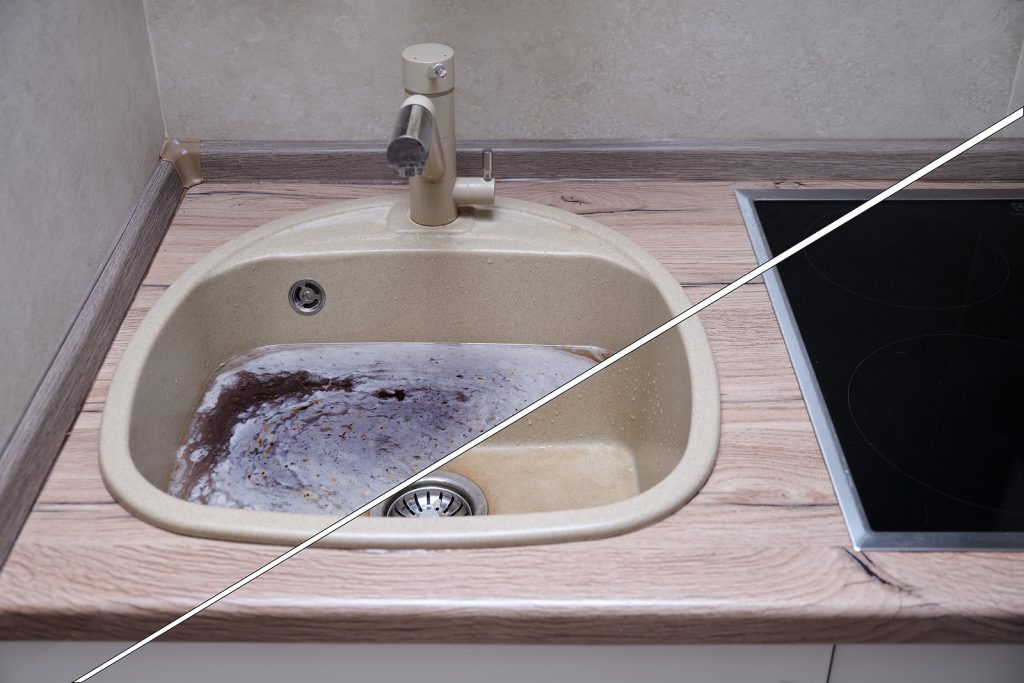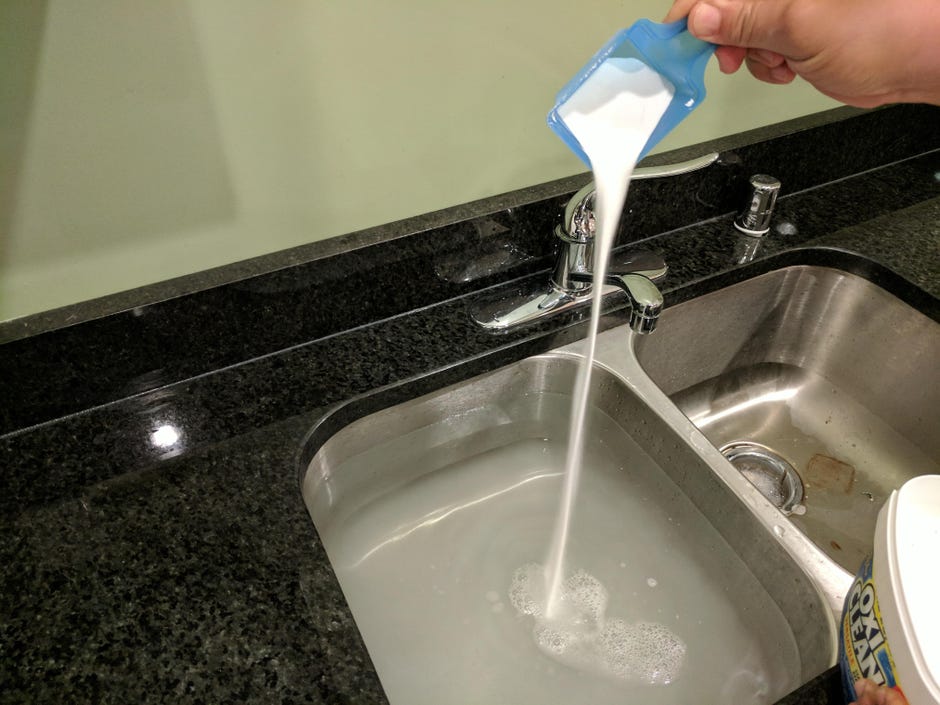The Big Blockage - 6 Causes Stalling Your Kitchen Sink's Ineffective Drainage
The Big Blockage - 6 Causes Stalling Your Kitchen Sink's Ineffective Drainage
Blog Article
What're your concepts on Five Ways to Fix a Slow Sink Drain?

It's not typical for your cooking area sink to block multiple times in one month. If your sink blocks twice a week, there's some trouble taking place.
An obstructed cooking area drain doesn't simply reduce your jobs, it degrades your entire plumbing system, little by little. Right here are some usual behaviors that encourage sink blockages, as well as exactly how to prevent them.
You require correct waste disposal
Recycling waste is terrific, however do you pay attention to your organic waste too? Your kitchen area must have 2 different waste boxes; one for recyclable plastics and also an additional for organic waste, which can become compost.
Having an assigned trash bag will assist you as well as your household prevent tossing pasta as well as other food remnants down the drain. Generally, these remnants soak up dampness and also end up being blockages.
The fault isn't from your kitchen sink at all
Maybe the trouble isn't from your cooking area sink, however the entire drainage system. In such a case, you might see that sinks as well as drains get obstructed every other week. You require an expert plumbing service to fix this.
You're tossing coffee down the tubes
Utilized coffee grounds and coffee beans still soak up a considerable amount of moisture. They might appear tiny enough to throw down the drainpipe, however as time goes on they begin to swell and also use up more room.
Your coffee premises ought to go into natural waste disposal. Whatever fraction runs away (maybe while you're washing up) will certainly be dealt with during your monthly cleaning.
You've been eating a great deal of greasy foods
Your cooking area sink might still get obstructed despite organic garbage disposal. This may be due to the fact that you have a diet plan rich in oily foods like cheeseburgers.
This grease layers the insides of pipelines, making them narrower as well as more clog-prone.
Make use of a plunger
Your pipe had not been repaired effectively in the first place
If you have actually been doing none of the above, but still obtain regular blockages in your cooking area sink, you ought to call a plumber. There could be a problem with exactly how your pipelines were set up.
While your plumber gets here, check for any type of leakages or irregularities around your cooking area pipes. Don't try to repair the pipes on your own. This may trigger a crash or a kitchen area flooding.
A person tried to wash their hair in the cooking area sink
There's a right time as well as area for everything. The kitchen area sink is simply not the right location to clean your hair. Washing your hair in the kitchen sink will make it block one way or another unless you use a drainpipe catcher.
While a drainpipe catcher might catch the majority of the results, some strands may still make it through. If you have thick hair, this might suffice to slow down your drain as well as at some point form a blockage.
There's even more dust than your pipelines can handle
If you get fruits directly from a ranch, you might see more kitchen dirt than other people that go shopping from a shopping mall. You can conveniently repair this by cleaning the fruits as well as veggies appropriately prior to bringing them right into your house.You require proper waste disposal
My Kitchen Sink Won’t Drain - What Should I Do?
If Your Sink Has a Garbage Disposal...
Turn on the disposal. If the disposal hums and doesn’t turn, then there’s clog in the disposal unit.
Go to your circuit breaker panel, and switch off the circuit breaker to your garbage disposal.
Back in your kitchen, double-check that your garbage disposal is off by trying to turn it on. The disposal should not move, and it should not make any noise.
Lie down underneath your sink so that you can see and access the bottom of the disposal unit. Look for a hole that looks like the head of a hex-head bolt in the center of the unit.
Place an Allen wrench inside this hole and turn it from side to side until you feel a decrease in resistance and are able to rotate the wrench completely in a single direction. This action rotates your disposal’s blade manually.
Put the wrench aside, and press the disposal unit’s reset button or switch.
Flip your garbage disposal’s circuit breaker switch back on, and turn on the unit to see if the obstruction has cleared. If it hasn’t, repeat the steps above until the obstruction is removed.
How to Unclog a Kitchen Sink Drain
If you have a double bowl sink, seal one side of the sink with an airtight lid or a second plunger before plunging the other side. Otherwise, you won’t be able to create adequate suction.
Place the cup of the plunger completely over the drain opening.
Turn on the faucet, and let the water run until it completely covers the cup of the plunger.
Start plunging by pushing the plunger down and pulling up again in order to build up suction. Make sure that the edges of the plunger stay in contact with your sink, or else you’ll lose the suction.
If you have trouble forming a seal between your sink and plunger, add petroleum jelly to the mouth of your plunger, and try again.
Plunge about five or six times before removing the plunger to see if water starts to drain properly. In some cases, you’ll even be able to feel the clog become dislodged while you plunge because suddenly there will be much less resistance. Repeat the plunging process until the clog clears.
Once water is draining properly again, run hot water down the drain for 5 minutes to help clear away grease, grime, and debris from the clog. https://www.plumbingjoint.com/blog/2019/august/my-kitchen-sink-won-t-drain-what-should-i-do-/

My Kitchen Sink Won’t Drain - What Should I Do?
If Your Sink Has a Garbage Disposal...
How to Unclog a Kitchen Sink Drain
https://www.plumbingjoint.com/blog/2019/august/my-kitchen-sink-won-t-drain-what-should-i-do-/
Do you enjoy more info about Five Ways to Fix a Slow Sink Drain? Leave feedback down below. We'd be delighted to find out your ideas about this page. We hope to see you back again soon. Do you know about somebody else who is curious about the niche? Do not hesitate to promote it. I treasure reading our article about Why Is My Sink Not Draining?.
Or Book Technician Here
Report this page